2016 Capstone Celebration Symposium
PLU Chemistry Department
May 2nd to May 6th, 2016 Join the Chemistry Department to hear the senior capstone presentations. Student presentations will occur Monday through Friday. The schedule of talks with more details is given below. [ Monday | Tuesday | Wednesday | Thursday | Friday ] Keynote Speaker: Bessie Young (’83), MD, MPH, Friday, 4:30 pm All talks in Rieke Science Center, Room 103
Monday, May 2nd , 2016 (Rieke Science Center Room 103)
1:44 pm - Welcome
1:45 pm - Developing a Selective Screen for Botryococcene Production via Fluorescence
Daniel Amster, Senior Capstone Seminar
Botryococcus braunii is a green algae capable of producing botryococcene using squalene synthase-like (SSL) enzymes. Botryococcene is a particularly interesting compound because it can be used to make biofuels that are useful for powering jet engines. The specific enzymes that form botryococcene are SSL-1 and SSL-3 which were expressed in E. coli hosts for this study. To perform directed evolution on these enzymes and yield mutant strains of the enzymes capable of faster botryococcene production requires a selective screen. A previously developed tetrazole compound is able to photoclick onto terminal alkenes and produce a fluorescent adduct. This tetrazole compound was used to develop a selective screen by exposing E. coli hosts to the compound and exposing the cells to UV light to induce the photoclick reaction of the tetrazole compound binding to the terminal alkene on botryococcene. The cells were then examined with a fluorescent microscope to determine if fluorescence intensity increased with the amount of botryococcene produced as the result of time. This method was able to distinguish cultures that had no botryococcene present and ones that did, but it was not capable of distinguishing the amount of botryococcene that had been produced.
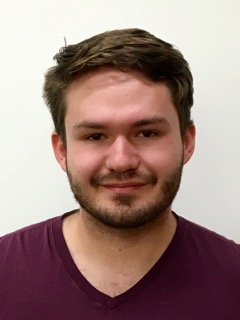
2:20 pm - Elucidating a Link between Oxidative Stress, Transcription and Adaptive Mutagenesis in the Yeast Saccharomyces cerevisiae
Jessika Iverson, Senior Capstone Seminar
Unrepaired DNA damage can lead to DNA mutations that change the cell’s phenotype. While this has been well characterized in dividing cells, less is known about how this process occurs in nondividing cells. Still, when in a state of growth arrest, some cells find a way to acquire a mutation that allows them to resume cell division; this process is known as adaptive mutagenesis. Work by other groups has indicated that an increase in oxidative stress might be a common feature of conditions that arrest cell division in the budding yeast Saccharomyces cerevisiae. Thus, we investigated whether canavanine-induced growth arrest had a similar effect. A wild type strain was exposed to the selective pressure canavanine for various lengths of time, incubated with an oxidation-specific dye (CellRox Green) and analyzed using fluorescence microscopy. Our data shows that fluorescence intensity increases over time of exposure to canavanine, indicating an increase in reactive oxygen species. This observation correlates with the experimental determination that when cells lack the ability to repair certain types of oxidative damage as a result of gene knockout, we see an increase in replicative mutation rates and adaptive mutation frequencies when compared to the wild type cell line.

2:55 pm - Synthesis of a 2,5-Disubsituted Tetrazole for Bioorthogonal Terpene Detection via Photoclick Chemistry
Angelina Gladchuk, Senior Capstone Seminar
Botryococcus braunii race B is a green colonial microalga that produces high quantities of organic hydrocarbon terpenes. One such hydrocarbon is botryococcene, whose structure consists of three terpene units and a branched terminal end alkene. Due to its abundance and the low carbon footprint of its production, botryococcene is an excellent candidate for investigation of its use as a precursor in the production of biofuels. E. coli have been genetically altered for the synthesis of botryococcene due to the slow growing nature of green algae. In order to optimize its production, a method for the detection of E. coli producing the largest quantities is necessary. Tetrazole photoclick chemistry, a bioorthogonal strategy, features the UV-induced reaction of a synthetic 2,5-diaryltetrazole with terminal end alkenes of biomolecules, in turn producing a fluorescent dihydropyrazole. For this purpose, a water-soluble, cell-permeable 2,5-diaryltetrazole is desirable. A versatile precursor tetrazole, 2-(4-formylphenyl)-5-(4-acetylphenyl)tetrazole (2% yield), bearing aldehyde and ketone functional groups was synthesized through the azo coupling of a novel 4-([(phenylsulfonyl)hydrozono]methyl)benzaldehyde (40% yield) and 4-acetylphenyldiazonium chloride.

3:30 – 3:40 - Break
3:40 pm - Investigation of Phase Transition Temperatures of Oligo(Ethylene Oxide) Grafted Oxanorbornyl Diblock Copolymers for Solid Polymer Electrolyte Supports
Sevryn Modahl, Senior Capstone Seminar
Solid polymer electrolytes (SPEs) offer a potentially safer alternative to current electrolytes used in lithium-ion batteries by removing the use of flammable solvents. The ionic conductivity of SPEs are tied to the segmental motion of the polymer backbone. Most common SPEs are poly(ethylene oxide), which can crystalize at room temperature and offers no resistance to dendrite growth. Polymers with a bulky backbone and a conductive tail may decouple the ionic conductivity from the segmental motion. The addition of a high modulus block to the polymer can cause the formations of nanomorphologies that may lead to ionic pathways as well as a structural region that can prevent dendritic growth. Nine oligo(ethylene oxide, N=3) grafted oxanorbornyl diblock copolymers with narrow polydispersities were synthesized using ring opening metathesis polymerization with varying compositions and molecular weights to determine the phase diagram. The order-disorder transition temperature (ODT) and order-order transition temperature (OOT) of the nanomorphologies and the bulk nanomorphologies of these diblock copolymers were investigated through the use of optical birefringence and small angle x-ray scattering.

4:15 pm - Microbial Degradation of Biodiesel
Michael Goodman, Senior Capstone Seminar
A gas chromatography-mass spectrometry analysis of different biodiesel blends was performed on four different commercially available samples along with homemade biodiesel blends. The analysis was easily achieved by examining mass spectra fragmentation of the fatty acid methyl esters (FAMES). The biodiesel was analyzed using different weathering techniques, microbial degradation and evaporation to better understand how biodiesel is affected by the environment. This data should help the forensic community due to the increase in the use of biodiesel as a renewable fuel source
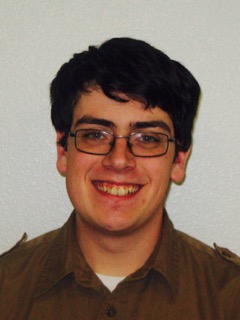
1:45 pm - Exploring Mutational Strand Bias in the Yeast Saccharomyces cerevisiae to Implicate Retromutagenesis as a Pathway for Adaptive Mutagenesis
Chance Brock, Senior Capstone Seminar
Cells under growth arrest have the ability to gain mutations by a process known as adaptive mutagenesis. In these conditions, replication has ceased, but transcription must continue to provide the cells with a means to express necessary proteins. We used Saccharomyces cerevisiae as a model organism to study the effect of transcription on the acquisition of adaptive mutations, and specifically if unrepaired DNA damage in the template strand during transcription played a role. Cells were subjected to canavanine a selective pressure that induces oxidative stress, and target gene sequencing was employed to elucidate the resulting mutation spectrum. Cells deficient in the repair of the common oxidative modification 7,8–dihydro-8-oxoguanine (8-oxoG) were used to take advantage of this lesion’s characteristic G:C to T:A mutation signature. The mutation spectrum indicated that 8-oxoG damage occurred primarily on the template strand (68%) of adaptive mutants. A similar strand bias was seen in cells that had acquired the mutation during replication (70%). A study of the sequence context around the lesions indicated a difference between the two groups, suggesting unique mechanisms of mutagenesis.

2:20 pm - Developing Methodology for Screening ssDNA Aptamers Against Human Squalene Synthase
Inga Christensen, Senior Capstone Seminar
Human Squalene Synthase (HSQS) catalyzes an important reaction in the biosynthetic pathway of cholesterol and as a result has been looked into as a possible target for hypercholesterolemia drugs. The alpha-J alpha-K loop region (315 KIRKGQAVTLMMD 327) of HSQS is highly conserved across species and is highly flexible, suggesting it plays an importance role in catalysis. This study looked into developing a screening methodology to isolate ssDNA aptamers that bind to HSQS and specifically this flexible alpha-J alpha-K loop region. Using an E. Coli host, we transformed, expressed, and purified HSQS and began screening the ssDNA aptamer library against the entire HSQS enzyme and alpha-J alpha-K loop region. Systematic Evolution of Ligands by Exponential Enrichment (SELEX) is the process we used to select for aptamers that bind to our target proteins. Upon completion of two SELEX rounds, our results indicate successful aptamer binding to HSQS and the flexible region.

2:55 pm - Investigating Interactions between CdSe Nanospheres and Triethylammonium Dimethyldithiocarbamate (TEADMPTC).
Matthew Garling, Senior Capstone Seminar
Colloidal semiconductor quantum dot properties depend on their surface ligands. Dithiocarbamate ligands are of particular interest due to their potential use in industry. Knowledge of how this ligand is binds to the crystal surface is lacking. TEADMPTC undergoes acid base chemistry in common solvents, producing multiple species in solution.
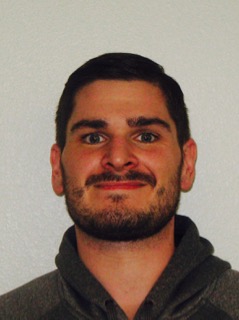
3:30-3:40 - Break
3:40 pm - Insertion of Botryococcus braunii Race B SSL-3 Gene into a pETDuet-1 Vector for the Comparative Expression and Production of Botryococcene
Loyall Harris, Senior Capstone Seminar
Algal biofuels are being actively researched as alternatives to conventional fuels as they can be easily renewable and environmentally conscious. Botryococcene is a triterpene biofuel precursor, produced by the colony forming green algae Botryococcus braunii race B. This biofuel precursor is produced in a biosynthetic pathway similar to that of squalene, another biologically produced triterpene, and utilizes two distinct enzymes, Squalene synthase like (SSL) enzymes 1 and 3. Production of botryococcene can make up to 85% of the algae’s dry mass, but is limited by the slow growth and production of the algae. E. coli have been used to express the SSL enzymes necessary to produce botryococcene in a more efficient way. The expression of these enzymes depends on their insertion into high efficiency plasmid vectors. Different plasmid systems have been utilized in botryococcene research and raise a question of enzyme expression efficiency. A Duet-1 plasmid vector containing the SSL-3 gene inserted into multiple cloning site 1 was constructed for the determination of plasmid system efficacy.
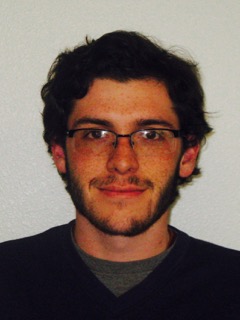
4:15 pm - Characterization of the Ionic Conductivity of Novel Oligo(Ethylene Oxide) Homopolymers for Use as Electrolyte Supports for Lithium Ion Batteries
Colin Peterson, Senior Capstone Seminar
New rigid polymers with a conductive tail have been synthesized as an alternative electrolyte support for lithium ion batteries. The ionic conductivity of LiTFSI through the polymer was found by impedance spectroscopy. These polymers are approaching competitive superionic conductivities without the issues of other electrolyte supports.

1:45 pm - Ring strain and stability as kinetic parameters for retro-Diels Alder decomposition in hetero-Diels Alder cycloadducts
Dylan Nehrenberg, Senior Capstone Seminar
The slow release of pharmaceuticals at body temperature by a retro-Diels-Alder (rDA) reaction is a potential strategy for controlled drug delivery. Using model systems, several p-nitrophenyl-nitrosohydroxyurea (p-NOPHU) cycloadducts were observed to decompose in the presence of water to furnish p-nitroaniline, nitroxyl (HNO), carbon dioxide, and the respective diene. Synthesized p-NOPHU cycloadducts were subjected to decomposition in 50:50 DMSO:H2O at temperatures ranging from 40-70 ºC, and monitored via UV-visible spectroscopy. The cyclopentadiene adduct decomposed fastest, with a half-life of 29 hours at 50 ºC and an activation energy of 24 kcal/mol, while the butadiene adduct decomposed most slowly – exhibiting a half-life of 248 hours at 50 ºC and an activation energy of 28 kcal/mol. A model compound to control for hydrolysis, which was incapable of undergoing retro-Diels-Alder reaction, was not observed to significantly decompose at 50 ºC; its activation energy for hydrolytic decomposition was measured to be 34 kcal/mol. The observed pattern correlates with relative ring strain in the Diels-Alder cycloadducts.

2:20 pm - Synthesis of a New Novel Polymer for Use in Solid Polymer Electrolytes
Sarah Kim, Capstone Senior Seminar
Research has been published that suggests decoupling ionic conductivity from segmental motion may be a plausible way to create a solid polymer electrolyte with high ionic conductivity at room temperature. In other words, one could create a polymer with a bulky rigid backbone where the frustrated packing of the polymer would allow ions to diffuse even when segmental motion is slow. The goal of this research is to synthesize a polymer that has conductivity from a polyethylene glycol side chain while introducing rigidity through the pi stacking of a benzene ring, located between the backbone and side chain. The monomer that is required to make the polymer is synthesized through a multistep synthesis. In the synthesis of the monomer, one of the more challenging reaction steps is the monobromination of p-tolylmaleimide. This reaction step was successful when subjected to microwave synthesis in diethyl carbonate, which is a more environmentally friendly alternative to conventional heating with carbon tetrachloride. With the successful bromination of p-tolylmaleimide, the monomer can be synthesized through further reaction steps.

2:55 pm - The Metal-Free Asymmetric Transfer Hydrogenation Of Unsaturated Aldehydes
Alexandra Clayton, Capstone Senior Seminar
The goal of this experiment was to determine if a metal free transfer hydrogenation of unsaturated aldehydes, specifically trans-cinnamaldehyde, was possible using Hantzsch ester as the hydrogen source. This reaction was facilitated by the use of a strong base of diisopropylethylamine (DIPEA), a saturated imidazolium, and tris(pentafluorophenyl) borane. It was found that ~79% of the trans-cinnamaldehyde present in the initial reaction could be converted to hydrocinnamaldehyde by means of microwave reaction. Eventually the hope is to recover the catalytic elements and regenerate the hydrogen source to create an overall more atom economical hydrogenation process.

3:30-3:40 - Break
3:40 pm - Microplastics in Facial Cleansers: Adsorption of Toxins to Plastics’ Surface
Ruby Reagan, Capstone Senior Seminar
Microplastics are a known problem in today’s waterways. These microplastics present many complicated problems, such as bioaccumulation and general surface water accumulation, and there has been some question about adsorption of toxins from these waters. Adsorption of various toxins to microplastic surfaces was investigated here. Analysis was performed using Fourier-Transform Infrared Spectroscopy. Little to no adsorption was observed, this could be due to concentrations being below the detection limit of the FT-IR utilized, or this could be one less problem microplastics present.

4:15 pm - The Effects of Ocean Acidification on Mollusk Shell Formation
Noble Hauser, Capstone Senior Seminar
Accelerated CO2 production is the driving factor behind oceanic acidification; when CO2 ia absorbed into the ocean, carbonate ions are converted into acidic bicarbonate ions, decreasing oceanic pH. Previous experiments have demonstrated increasingly acidified oceans have deleterious effects on many aquatic species, including calcifying species such as mollusks. The 2011 study conducted by the Gazeau et al. research group has presented evidence suggesting the conditions produced by increased carbon dioxide concentrations that correlate with diminished calcium carbonate shell synthesis. Gazeau’s results determine that carbonate ion availability is the most significant factor in determining a mollusk’s ability to utilize aragonite to produce calcium carbonate shells; if carbonate ion concentrations were increased (>6,000 μmol/kg), the mollusk’s ability to calcify was restored despite lowered pH and aragonite saturation levels with normal shell area (4,300 μm2), shell length (82 μm) and incorporated calcium (2.8 ng/ind) when compared to controls. Conversely, if carbonate ion concentrations were decreased (<1,500 μmol/kg), the most deleterious results were recorded in regards to shell area (3,500 µm2), shell length (72 μm) and incorporated calcium (1.5 ng/ind) . While aragonite saturation did result in slightly reduced calcification efficiency, the results were not as significant as carbonate saturation. Further research into the calcification mechanisms disrupted by acidification should be analyzed to fully understand the effects of ocean acidification on mollusk shell formation.
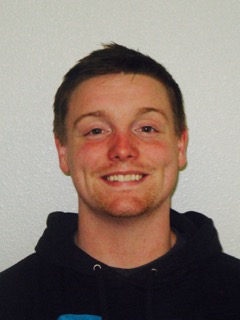
1:45 pm - Hexagonal Boron Nitride for Durable Electronics
Conor O’Bryan, Capstone Senior Seminar
Given the damage silicon transistors accumulate in high-temperature and high-radiation environments, a durable material suitable for high-speed electronics is preferred for devices in such environments. This presentation reviews hexagonal boron nitride as a potential candidate for this role.

2:20 pm - Determining the Effect of Ascorbic Acid on Retromutagenesis in Saccharomyces cerevisiae
Joshua Larson, Capstone Senior Seminar
Reactive oxygen species (ROS) can cause damage to DNA when in high concentrations. This DNA damage can lead to mutations that can either be detrimental or advantageous to growing cells, or it could allow a non-growing cell under selective pressure to re-enter the cell cycle. The process in which a mutation allows the cell to re-enter the cell cycle is referred to as retromutagenesis. The effectiveness of the antioxidant ascorbic acid on combating ROS accumulation was studied. Using Saccharomyces cerevisiae as a model organism, we investigated the replicational mutation rates and adaptive mutation frequencies of ogg1Δ cell lines with ascorbic acid ranging in concentration from 0 to 100 mM. The ogg1Δ cell line was used for its inability to repair oxidative DNA damage. The presence of ascorbic acid had no discernible effect on the generation of mutations in either setting, suggesting that ascorbic acid does not appear to be an effective antioxidant in these experimental conditions.
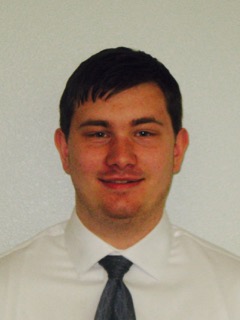
2:55 pm - The Hetero Diels-Alder Reaction of Aromatic Rings with Urazole Derivatives as Potential Photo-controllable Releasing Compounds
LaCrystal Wooten-Wisse, Capstone Senior Seminar
Synthesis of Hetero-Diels-Alder cycloid adducts from conjugated aromatic rings and urazole derivatives has been explored. These compounds have the potential to be photo-inducible nitroxyl (HNO) releasing agents which would allow for stable release of HNO.

3:30-3:40 - Break
3:40 pm - Synthesis of a Morpholino Benzofulvene Derivative for Possible Use as a Thioredoxin Reductase 1 Inhibitor
Kalie Saathoff, Capstone Senior Seminar
Overexpression of thioredoxin reductase 1 (TrxR), an enzyme present in many organisms, has been linked to tumor formation. Computational modeling of this enzyme and its structure suggests that compounds with a benzofulvene core show high nanomolar binding affinities to TrxR, making them ideal for inhibition of TrxR. This research focuses on the synthesis of a morpholino benzofulvene derivative. Gas chromatography mass spectrometry (GC-MS) spectra suggest that this benzofulvene derivative was synthesized in trace amounts.

4:15 pm - Donor-Acceptor Cyclopropanes, Rearrangement, and the Potential for Carbon Dioxide Activation
Alice Henderson, Capstone Senior Seminar
Carbon dioxide (CO2) is a well known greenhouse gas that helps keep the planet at temperatures suitable for life; however, rising atmospheric CO2 levels due to industrial activity are a growing concern. In the interest of discovering potential methods for reducing atmospheric CO2 or limiting it’s release into the atmosphere, the activity of donor-acceptor (D-A) cyclopropanes is being investigated. Various D-A cyclopropanes have been synthesized and successfully opened in the presence of CO2 and nitrogen gas (N2). While NMR and GC/MS spectra of various products does not indicate CO2 activation, intriguing rearrangements have taken place to form both diene and lactone products. These rearrangement products are potentially relevant for organic synthesis of drug molecules as well as for better understanding the chemistry of D-A cyclopropanes. Future work includes further investigating the mechanism of these rearrangements in the hopes of limiting their occurrence to encourage interaction with CO2 in the hopes of incorporating the inert gas as a y-butryolactone.
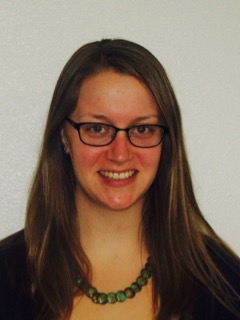
1:45 pm - Investigation of the Phase Behavior of a Novel Diblock Copolymer Electrolyte System with Potential Applications in Lithium-ion Batteries by Atomic Force Microscopy
Thomas Kolibaba, Senior Capstone Seminar
Solid polymer electrolytes offer the possibility of combating some of the safety issues inherent in current lithium-ion batteries. However, in current polymer electrolytes, ionic conductivity is directly tied to segmental rearrangement of the polymer backbone. A variety of novel oligo(ethylene oxide) grafted diblock copolymers with bulky backbones were synthesized from basic building blocks and characterized for use as solid polymer electrolytes which can decouple ionic conductivity from local segmental dynamics. The phase behavior of these systems was studied by atomic force microscopy and appears to deviate substantially from standard theoretical random coil – random coil diblock systems. This deviation is believed to be due to a conformational asymmetry in the two blocks studied this system, with this effect seeming to be exaggerated as the oligo(ethylene oxide) sidechain lengths increase.

2:30-3:30 pm - Division of Natural Sciences Poster Session (Morken Atrium)
3:40 pm - Release of Provitamin D and Other Substituted 1,3-Cyclohexadienes by a Retro-Nitroso-Diels-Alder Reaction: a Diene Structure-Kinetics Study.
Brock Lynde, Senior Capstone Seminar
The retro-Diels-Alder reaction is a potential method for the slow, controlled release of diene molecular cargo from a polymeric carrier. In this study, 1,3-cyclohexadiene and three other substituted variants were chosen to probe the effects of diene structure on retro-nitroso-Diels-Alder reactions. Specifically, the natural products 7- dehydrocholesterol (provitamin D3), ergosterol (provitamin D2), and α-terpinene were selected due to their variations in cyclohexadiene substitution and the potential application of vitamin-polymer conjugates. Nitroso-Diels-Alder adducts of the four dienes were synthesized by reaction with N-p-nitrophenyl-N′-nitrosocarbamide (generated in situ by oxidation of the corresponding hydroxyurea) under anhydrous conditions at ambient temperature or below. When these Diels-Alder adducts are heated under aqueous conditions, they undergo retrocycloaddition to free the diene “cargo”. The released nitroso dienophile hydrolyzes rapidly to produce 4-nitroaniline, nitroxyl (H-N=O), and carbon dioxide (CO2). The rate studies for the decomposition were carried out by warming our model compounds in aqueous 1,4-dioxane at temperatures between 37-50 °C and monitoring by UV-visible spectroscopy. Multicomponent spectrophotometric analysis and psuedo-first-order kinetics modeling were performed on the spectroscopic data by utilizing the steady-state approximation. An Arrhenius plot was used to deduce the activation energy for the rate-determining retro-Diels-Alder reaction step in the mechanistic model.
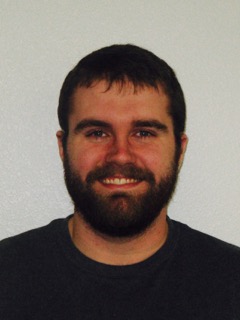
4:15 - 4:30 pm - Break
4:30 pm - Keynote Speaker (Rieke Science Center Room 103):
There and Back Again, A Lute's Unexpected Journey
Bessie A. Young (’83), MD MPH
Professor of Medicine, Division of Nephrology
University of Washington, VA Puget Sound Health Care System




Social Media